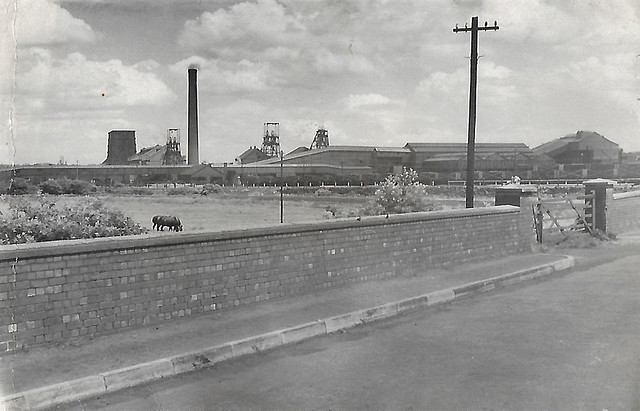In this short article I aim to capture at least some of the essence of what it meant to live at Woodyard Cottages in the days of the old Walton colliery. I do this through the eyes of members of my own family and the photographs they took of themselves and their surroundings.
Woodyard Cottages were built for the miners and their families and were immediately adjacent to the colliery site. While there was more housing for mining families in the form of the Ings Cottages, known locally as “The Spike”, at the other side of the pit, I am going to concentrate on the Woodyard, because that is where my ancestors lived. The housing of working people was close to the work back in those days. Physically demanding work and long shifts meant that there was no time to waste on commuting.
Today the Woodyard Cottages are located next to the serene and peaceful nature reserve in a highly desired location. The photograph below is from the present day, taken from the road that was used as the thoroughfare for coal trucks.
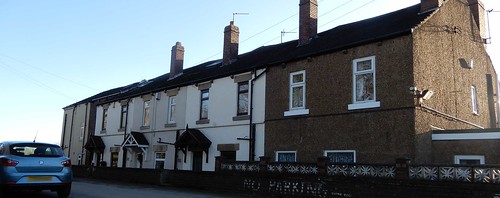
This now secluded and peaceful spot was once the centre of a great deal of hustle, bustle and industry. These were the homes of miners who worked hard for modest wages. They lived and loved and brought up their families in this place they called home.
There used to be speed bumps in the road painted in broad black and white stripes to slow down the Hansons coal haulage lorries that hurtled down the hill to the colliery. I used to watch the lorries with my grandad, Albert Knowles, from the wall on the opposite side of the road, as they came down the road empty and went back up fully laden with dust sheets covering the top of the load to prevent coal dust getting into the air.
The wall opposite the Cottages was also a popular site for the taking of group photographs like the one pictured below.
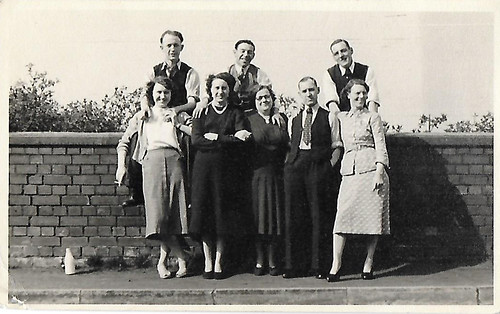
The lorries would continue down the road and cross the canal that ran through Walton and then on through the pit site. This route comes as no surprise as coal was one of the main canal cargoes. The photograph below shows the road bridge over the canal on the left of the view. Woodyard Cottages are just behind the photographer. The building at the right hand side of the photo is the beginning of the brickyard. The structure above Albert Knowles’ right shoulder are the bunkers (more on that shortly).
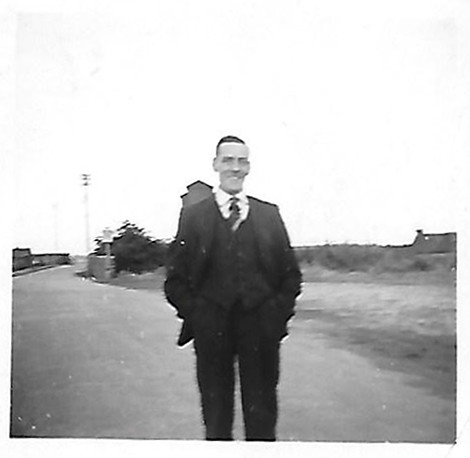
There is an alley at the front of the cottages. A wall and railing and the alley are all that separate the homes of the miners from the road and the coal laden wagons that went up and down it day after day. The alley is where George Knowles is having a go on his young nephew’s tricycle in the photo below and appearing to have be having a really good time. In the pit, George’s role was to look after the hard working horses in the stables in the pit bottoms.
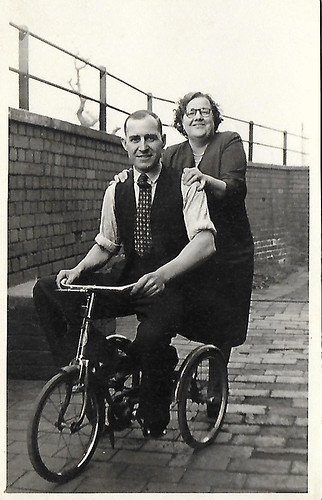
The wall is still there today, but the railing is gone. However, there are traces of the railing embeded into the surface of the masonry.
There was another alleyway to the rear of the cottages. This ran between the cottages and the gardens of each house. The alleyway can be seen in the photos below that also show me at a young age with blonde hair, decked out in the latest 1970s fashions. The gardens can be seen on the left hand side of each photo below. On the horizon you can see the banking of the railway line that runs past Greenside, Oakenshaw Lane and Walton Common. The other railway line that runs to London runs beyond the bottom of the gardens and goes under the line mentioned above.
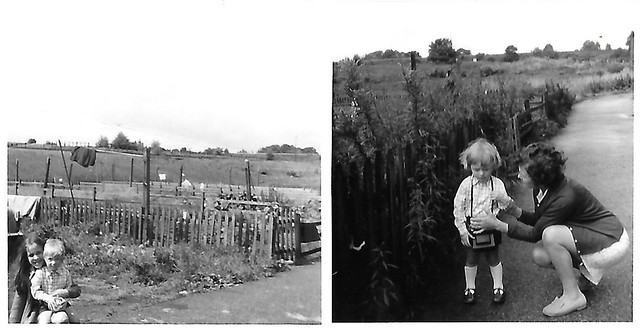
In the photo below my dad and auntie, in younger years, are having their photograph taken just as the local rooster is sneaking up behind them. The building behind the rooster is the detached cottage that is still there, further up the hill. To the right of that can be seen a bungalow that has since been pulled down. Between each of these buildings a stable once stood but has since disappeared.
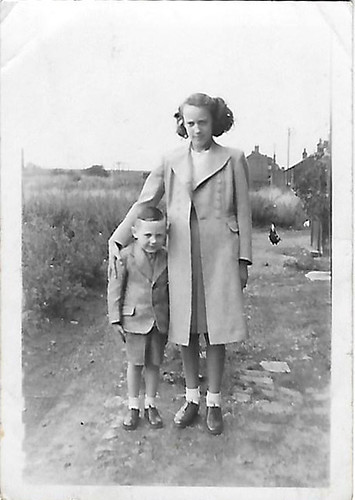
My grandad had a pigeon loft in his stretch of garden. He is pictured below with prize pigeon that he called ‘Little Hen’. It won a number of races for him. There is an amusing story about this bird after he sold it to a bloke in Outwood. In true homing pigeon style it kept returning to its Woodyard loft even after the sale meaning that its new owner had to keep coming back to retrieve it. What do you expect when you buy a homing pigeon!

The photograph below is another view of the rear alleyway. However, this time there are a few other features visible in the background. On the middle left at the side of the alley you can see the back of the bus shelter. Next to that is the building that managed the weighbridge that was immediately in front of it. This was used to measure the coal loads coming out of the pit in the lorries. On the far right of the photo you can again see the start of the brickyard mentioned earlier. To the right of the black vehicle at the top of the road in the centre left are the bunkers. These were used for the direct sale of coal to coal merchants. As part of this structure there were four coal shoots to feed into bags for coal wagons. Coal was brought here via a rail line from the pit.
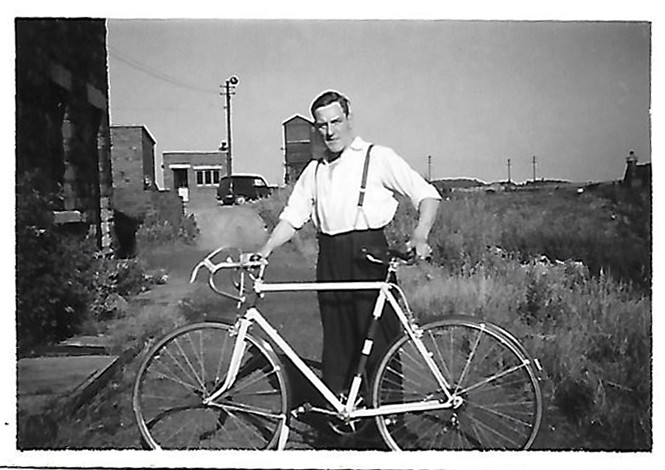
The back of the bus shelter is seen closer up in the next photos. In the first photo (in colour) the ice cream man had just been and a miner awaits his ice cream from his wife at the top of the hill.
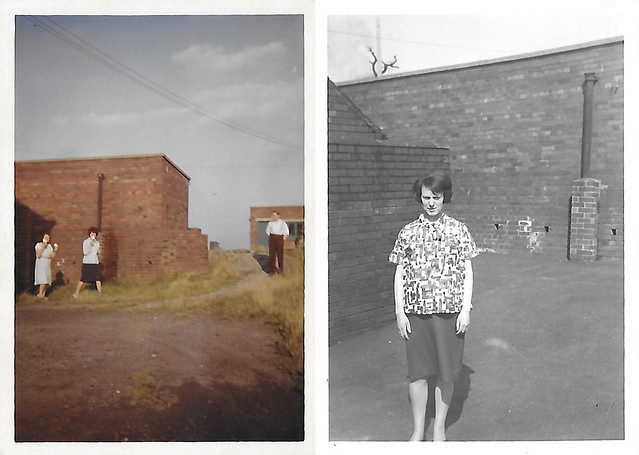
The back of Woodyard cottages are faced with stone in contrast to the ordinary brick in the front. The following photo shows the family standing on the step at this side of the house with the stone visible behind them.
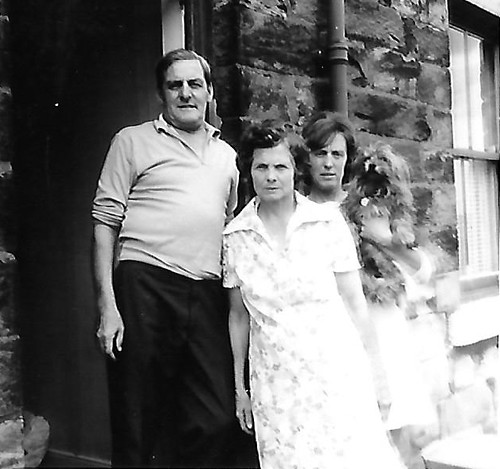
The following photos show the inside of number five Woodyard Cottages in the 1960s. In the background of the first photo you can see a cooking range that was fuelled by an open coal fire. Before the appearance of bathrooms this would also be where baths were taken in a tin tub.
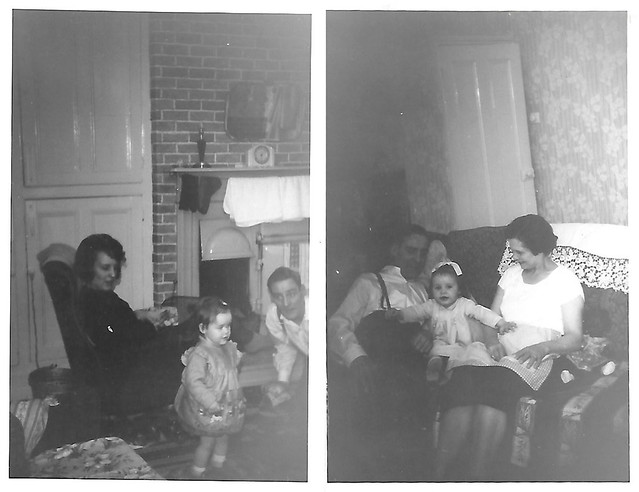
In the following photo, my grandma, Martha Knowles, stands in front of the brickyard, kilns and chimney. Again, the bunkers are visible at the left hand edge of the photo.
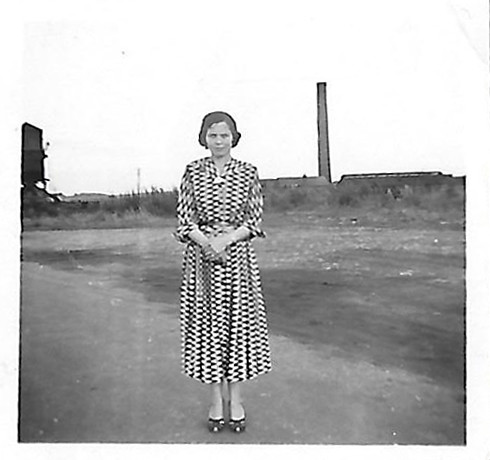
The final photograph, below, shows the view of the pit complex from the wall that separated the alley in front of the cottages from the road. The cooling towers, the chimney, three winding machines, and the screening plant are all visible in this photo. The two ponies in the field were called Royal and Boxer (which had a white blaze on its forehead). These horses did not go down the pit but pulled loads on the surface. The banking at the far end of the field is that of the canal mentioned previously.
